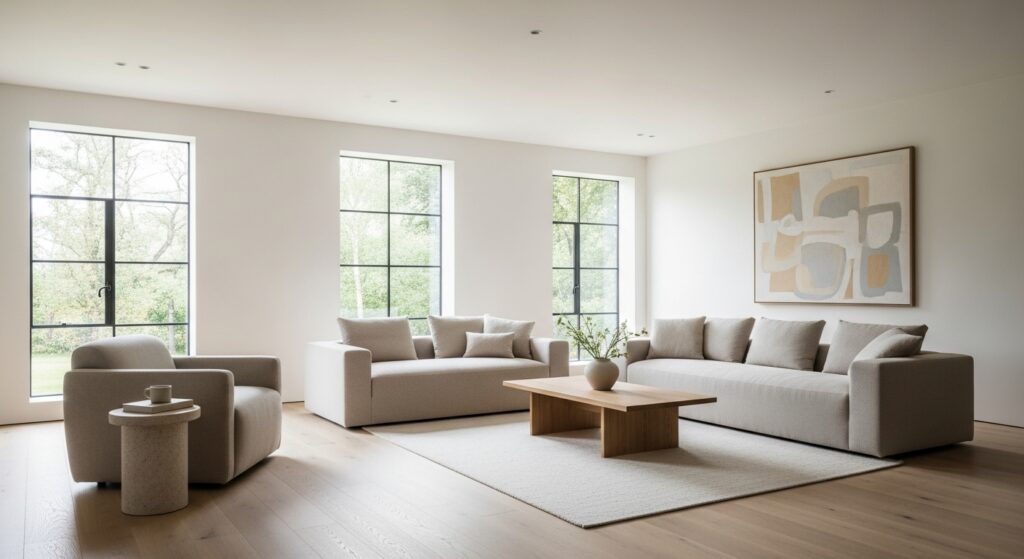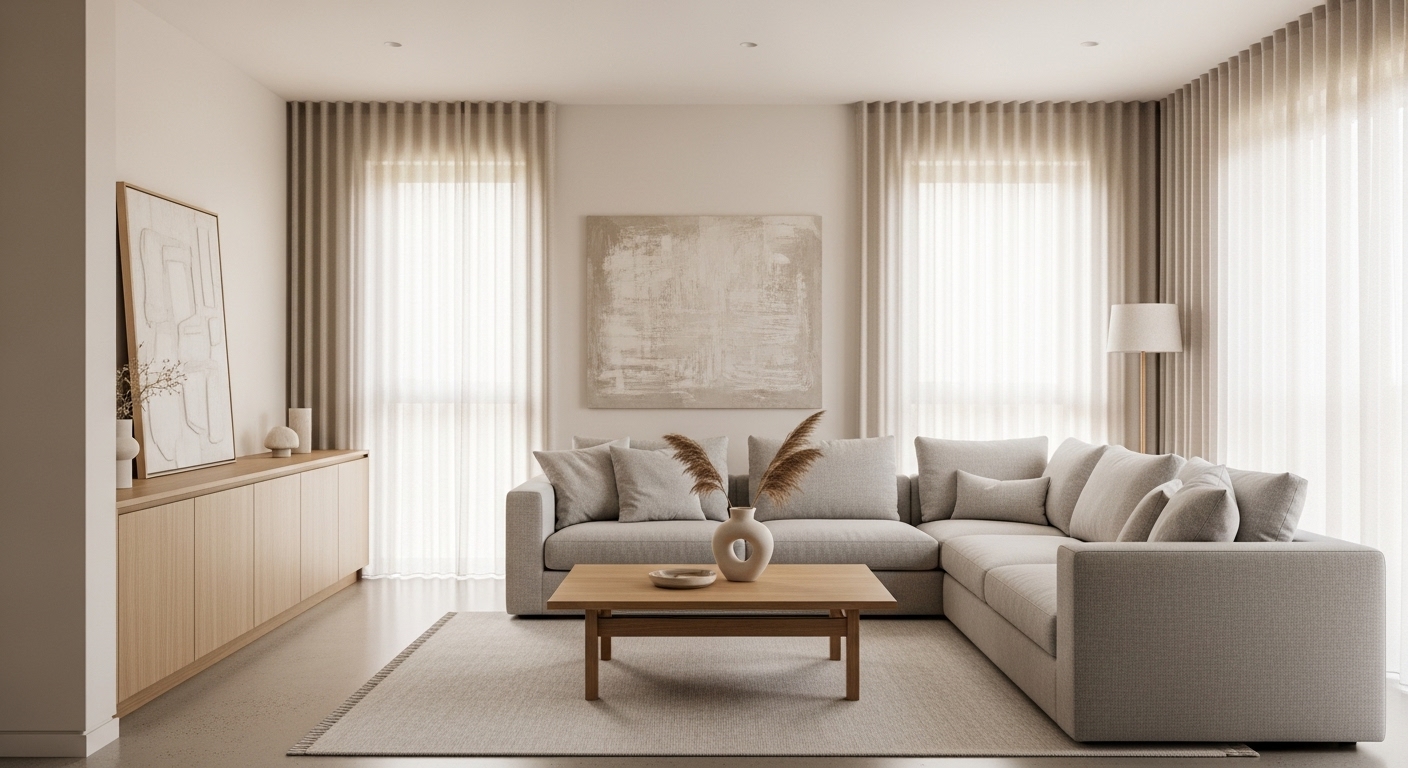In a world filled with constant stimuli, endless clutter, and daily distractions, the idea of intentional minimalism offers a much-needed breath of fresh air. Intentional minimalism is not merely about owning fewer items; it is a conscious approach to life that prioritizes simplicity, functionality, and serenity. This philosophy takes minimalism one step further, transforming spaces into environments that actively foster calm, focus, and genuine well-being.
Intentional minimalism reimagined is about making thoughtful choices, understanding your personal needs, and creating a home that reflects clarity and purpose. This comprehensive guide explores how intentional minimalism principles can help you achieve a balanced and peaceful living space that supports your lifestyle and values.

Understanding the Essence of Intentional Minimalism
Intentional minimalism represents far more than the simple act of decluttering. It is about mindful decision-making in all aspects of your home and lifestyle. Every item, every color choice, every texture, and every layout decision should serve a specific purpose, contribute to harmony, or enhance your overall quality of life.
This philosophy recognizes that less is truly more when each element carries meaning. Rather than removing everything until your space feels empty, intentional minimalism encourages you to keep only what serves you well.
Prioritize Functionality in Your Intentional Minimalism Journey
The foundation of intentional minimalism begins with prioritizing functionality. Focus on furniture and decor that serve practical purposes rather than existing purely for aesthetic reasons. Every piece should earn its place in your home through utility and purpose.
Multifunctional furniture like storage beds, modular shelving systems, and foldable tables reduce visual clutter while maintaining aesthetic appeal. A storage ottoman serves as both seating and hidden storage. A wall-mounted desk provides workspace without consuming permanent floor space. These intelligent choices exemplify how intentional minimalism combines practicality with beauty.
When you evaluate each item through a functionality lens, you naturally begin creating spaces that work harder and look cleaner simultaneously.
Curate Your Space with Intentional Minimalism Principles
Curation is central to successful intentional minimalism implementation. Select items that evoke genuine joy or serve essential functions in daily life. Regularly assess your belongings and remove anything that no longer aligns with your current values or lifestyle.
Ask yourself meaningful questions: Does this item bring me joy? Do I use this regularly? Does this serve my current life? If the answers are no, it’s time to let it go. This continuous assessment ensures your space evolves with you rather than becoming stagnant.
The beauty of intentional minimalism is that it’s not about extreme deprivation—it’s about surrounding yourself only with what genuinely matters.

Embrace Negative Space and Visual Breathing Room
One of the most transformative aspects of intentional minimalism is learning to embrace negative space. Leaving open, empty areas in your home allows for mental clarity, visual calm, and a genuine sense of breathing room. A well-balanced layout avoids overcrowding and significantly enhances the feeling of spaciousness, regardless of your home’s actual square footage.
Empty wall space is not wasted space—it’s intentional design. Open shelving with carefully selected items looks more sophisticated than shelves packed to capacity. A minimalist bedroom with one carefully chosen artwork creates more visual impact than walls covered with dozens of frames.
When you embrace negative space, you’re not removing elements; you’re strategically placing importance on what remains.
Use Color and Texture Thoughtfully in Minimalist Design
In intentional minimalism, color selection becomes a powerful design tool. Neutral colors, soft tones, and natural textures naturally promote tranquility and create a cohesive visual environment. Rather than using many colors, establish a limited palette that flows throughout your space.
Introduce accent colors sparingly to create strategic focus points without overwhelming the senses. A single piece of artwork in a bold color against neutral walls becomes a powerful focal point. One jewel-toned cushion on a neutral sofa adds sophistication without chaos.
Natural textures like wood, stone, linen, and wool add warmth while maintaining the clean aesthetic that defines intentional minimalism. These elements connect you to nature while supporting your design vision.
Designing for Calm: The Wellness Impact of Intentional Minimalism
Intentional minimalism extends far beyond surface aesthetics; it profoundly impacts mental and emotional well-being. A thoughtfully designed minimalist space actively encourages relaxation, supports focus, and fosters creativity. Research consistently shows that cluttered environments increase stress and anxiety, while organized, minimalist spaces promote calm and mental clarity.
Your physical environment shapes your emotional state. When surrounded by fewer items and more intentional design, your brain experiences less visual stimulation, allowing for deeper focus and greater peace. This is why intentional minimalism often leads to improved sleep, reduced anxiety, and increased productivity.
Maximize Natural Light and Fresh Air
Maximizing natural light creates an immediate sense of openness and positive energy. Simple, uncluttered window treatments and strategically placed mirrors can enhance light flow throughout your home. Proper ventilation keeps spaces feeling fresh and inviting rather than stale.
In intentional minimalism, windows are treated as design features rather than obstacles. Minimal window coverings allow maximum light penetration, literally and figuratively brightening your space while supporting your minimalist aesthetic.
Incorporate Biophilic Elements for Natural Connection
Biophilic design—bringing nature into indoor spaces—aligns beautifully with intentional minimalism. Incorporate live plants, natural wood, or stone textures to strengthen your connection with nature. These elements reduce stress, improve mood, and support mental well-being while maintaining clean minimalist lines.
A single large plant in the corner creates impact without clutter. Natural wood shelving brings warmth. Stone coasters and wood cutting boards add texture to surfaces. These carefully selected natural elements embody intentional minimalism by merging function, beauty, and wellness.
Practical Implementation Strategies for Intentional Minimalism
Transforming your space requires strategic action. Start small by decluttering one room at a time, focusing on areas that impact daily life most significantly—such as your bedroom, kitchen, or living room. This incremental approach prevents overwhelm and builds momentum.
Adopt a “One In, One Out” policy going forward. For every new item introduced, remove one old or unused item. This practice prevents re-accumulation and maintains the balance you’ve achieved through intentional minimalism.
Invest in quality over quantity. Choose fewer, higher-quality items that last longer and bring genuine joy. This mindset naturally reduces waste while enhancing your home’s overall aesthetic and sustainability.
Extend Intentional Minimalism Beyond Your Physical Space
Intentional minimalism extends beautifully into daily routines and digital life. Streamline cleaning, organization, and lifestyle habits to reduce mental load and create more time for relaxation and mindfulness. Digital clutter creates mental chaos just as effectively as physical mess does.
Organize digital files, limit unnecessary notifications, and curate a digital environment that mirrors your peaceful physical space. This holistic approach to intentional minimalism creates comprehensive calm throughout all aspects of your life.
Transform Your Spaces with Intentional Minimalism
Intentional minimalism applied to your living room means using modular sofas, minimalist coffee tables, and carefully selected art pieces. Avoid overcrowding; create intentional space for conversation and relaxation.
Your bedroom should prioritize restful sleep with neutral bedding, minimal furniture, and perhaps blackout curtains. A clutter-free bedroom directly supports emotional well-being and sleep quality.
Keep kitchen countertops clear and invest in functional appliances. A clean, organized kitchen encourages healthier habits and reduces daily stress. Your workspace should contain only essential tools, improving both productivity and mental clarity through intentional minimalism.
Sustainability Meets Intentional Minimalism
Adopting intentional minimalism naturally aligns with sustainable living practices. By choosing durable, high-quality products and reducing overall consumption, you minimize waste and environmental impact. Repurposing items, supporting recycling initiatives, and choosing ethical brands further enhance your eco-conscious lifestyle.
This convergence of minimalism and sustainability creates positive ripple effects—you live better while contributing to a healthier planet.
Conclusion: Embrace Empowerment Through Intentional Minimalism
Intentional minimalism is not about deprivation but about empowerment. Through thoughtful design and conscious choices, you can create spaces that reflect your values, foster genuine well-being, and provide sanctuary from daily chaos. By simplifying, curating, and mindfully selecting what truly matters, you transform your home into a haven of calm and purpose.
Your space becomes not just beautiful, but deeply meaningful—supporting who you are and how you want to live.
Related Resources: For additional inspiration on minimalist living, explore The Minimalists, Becoming Minimalist, and Apartment Therapy: Minimalism.
Previous Post: Functional Elegance: How to Balance Style and Practicality

